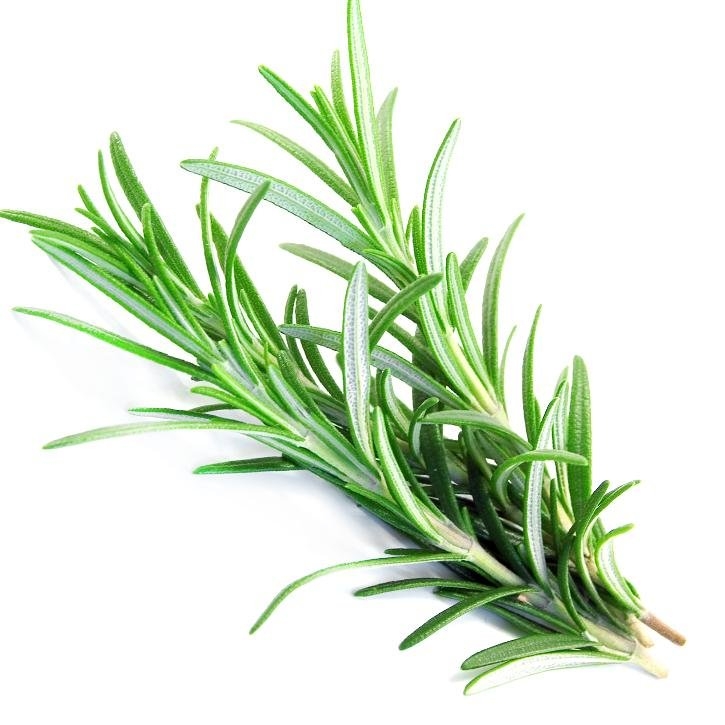Description
It is an evergreen shrub, densely bifurcate of 0.5-1 m in height, very branched from its base, foliate, aromatic. Its bark is exfoliative, puberulent or almost epilose. Leaves grow opposite, linear of 1-3 cm long and 3 mm wide, lanceolate, needle-like, and coriaceous, obtuse, glabrous in the upper side of the leave, which is deep green and white in the underside due to the presence of a small starry tomentum; glandular hairs with essence, revolute margin. Inflorescence arranged in bunches of 2-3 cm long, in the axil of the leaves situated near the end of the branches. Calyx bilabiate, 4-4.5 mm long, corolla bilabiate of 10-12 mm long, with the upper lip flat (non-convex) formed by two very visible lobules; the inferior lip has three lobules, being the medial one bigger and hood-shaped, pale blue with elongate purple stains; the upper lip is entire and shows three tiny teeth whereas the inferior lip is cleft in two triangular teeth, it has very short hairs that use to fall thus becoming hairless. Androecium is formed by 2 stamens, curved, almost fixed by the anthers, with quite long filaments that stand up from the corolla. Gynoecium with superior bicarpellary ovary that fructify in a loment with four nucules. The fruit, enclosed in the bottom of the calyx is a brown tetrachaenium (it is divided in 4 small smooth nutlets at the bottom of the calyx). It belongs to the Lamiaceae or Labiatae (Mint) family.
It is a spontaneous species in the Mediterranean region, from where it comes. It grows in the coastal areas and low mountain regions (slopes and hills), mostly in arid, dry, light, somehow sandy, permeable, well drained and calcareous soils, often accompanying oaks, from the coast to up to 1,500 m high. It adapts to poor soils while compact clayey soils are not convenient. It is easily cultivable, even in pots. It is found in the Mediterranean region of South Europe and North Africa, also in Asia Minor. Green rosemary is recognized by its strong camphorated smell. It blooms almost during all year (spring and autumn). During the first year it shouldn’t be harvested. Leaves and apex are harvested from April to September; leaves alone at any time of the year, from the second or third year, although the best moment is after the summer. Flowers during blooming.
Part used
Floral apexes (stems, flowers and leaves).
Indications
*Internal use
- Digestive disorders: Flatulence, meteorism, digestive spasms, dyspepsia associated to nervous tension, anorexia.
- Hepato-biliary deficiencies: biliary dyskinesia, liver congestion, hepatitis, hepatic cirrhosis, cholecystitis, biliary lithiasis.
- Rheumatism, arthrosis, arthritis, gout and arthralgias.
- Amenorrhea (absence of menstruation), oligomenorrhea, dysmenorrhea (menstrual pain), menopause. In these cases, it may loss effectiveness with the passage of time, reason why it is recommended its use together with other plants (e.g. mugwort).
- Asthenia, nervous exhaustion, convalescence periods.
- Headaches and migraines, vertigo.
- Low blood pressure.
- Respiratory affections: bronchitis, influenza, bronchial asthma, hacking cough.
- Loss of memory, atherosclerosis, ischemic heart diseases.
- Impotence.
- As a seasoning to help preserving oils and meats, seasoning of soups, stews, cecina (a type of dehydrated meat), fish, etc. In the preparation of vinegars.
- Essential oil, used in food, perfume and cosmetic industry.
*External use
- In oil form, ointments and rosemary alcohol:
- Adjuvant in the treatment of rheumatic diseases: myalgias, muscular rheumatisms, torticollis, muscular contractures, sciatica, lower back pain, intercostals nerves, contusions, sprains, strains, against muscular fatigue, aching and stiff muscles, and overstrains in sportspeople.
- Peripheral circulatory alterations.
- To favor the healing of wounds, sores, skin infections, seborrheic dermatitis, symptomatic relief of allergic skin reactions.
- Alopecia, hairloss (rosemary essence).
- Oral hygiene in the form of mouthrinses.
- Leaves of rosemary can be burned to disinfect rooms or be placed in the wardrobes to prevent moths.
Bibliography
- Real Farmacopea Española. Suplemento 2001.
- British Herbal Pharmacopoeia, 1983.
- Plantas Medicinales. Thérapeutique-Toxicité. Christiane Vigneau. Masson, Paris 1985.
- Matière Médicale (tomo III). RR Paris- H. Moyse. Masson 1981.
- Fitoterapia: Vademecum de Prescripción. Plantas Medicinales. Colaboran: Asociación española de médicos naturistas. Colegio Oficial de Farmacéuticos de Vizcaya.
- Plantas Medicinales. El Dioscórides Renovado. Pio Font Quer.
- Herbal Drugs and Phytopharmaceuticals. Norman Grainger Bisset (Ed). Max Wichtl. CRC Press.1994.
- Plantas Medicinales y Drogas Vegetales para infusión y tisana. Edición española a cargo de: Salvador Cañogueral, Roser Vila, Max Wichtl.1998.
- Plantas Medicinales. Margarita Fernandez y Ana Nieto. Ed Universidad de Navarra. EUNSA 1982.
- 100 Plantes Medicinales. Max Rombi. Romart 1998.
- The Complete German Commission E Monographs. Therapeutic Guide To Herbal Medicines. Mark Blumenthal. American Botanical Council 1998.
- Pharmacognosy, Phytochemistry, Medicinal Plants. Jean Bruneton. Lavoisier Publishing.
- Fitoterapia Aplicada. J.B. Peris, G. Stübing, B.Vanaclocha. Colegio Oficial de Farmacéuticos de Valencia 1995.
- Farmacognosia. 13ª edition. Trease-Evans.
- Elementos de fitoquímica y de farmacognosia. Editorial Acribia S.A. Jean Bruneton. 1991.
- Farmacognosia 2ª Edición. Jean Bruneton. Ediciones Acribia S.A. 2001.
- Bulletin officiel Nº 90/22 bis. Ministère des Affaires Sociales et de la Solidarité.
- French Public Health Code.
